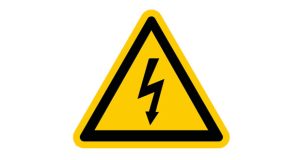 When disaster strikes, business operations can be significantly impacted, causing major losses. Hein Hemke, MD of disaster recovery firm BELFOR, explains how FMs can improve their chances of recovery and limit lasting impact on their business
When disaster strikes, business operations can be significantly impacted, causing major losses. Hein Hemke, MD of disaster recovery firm BELFOR, explains how FMs can improve their chances of recovery and limit lasting impact on their business
CHANGING CLIMATE
While global supply chains have become more complex and vulnerable, natural disasters have also become more frequent and devastating. In fact, according to the British Red Cross extreme weather events are on the rise. From heatwaves and droughts to floods and storms, the climate crisis is contributing to, and worsening, emergencies across the country, putting the health, homes, and livelihoods of society at risk.
As global temperatures continue to rise, normal climate patterns are changing, making what we call “surges” more frequent and increasingly likely.
WHAT IS A SURGE?
A surge is an unexpected event that impacts a large number of people simultaneously, resulting in widespread damage that requires specialist restoration services.
A national surge could be the consequence of a weather event happening all over the country, such as the cold snap we saw in December 2022, which led to frozen pipes and water tank ruptures. Or it could be a localised surge, which typically impacts lots of people in one specific area – a major flood, for example.
Whether it is a natural disaster or localised water or fire damage, significant restoration services are required to enable businesses to return to normality.
WEATHERING THE STORM
So how do you mitigate the damage to give your business the best chance of recovery? How can businesses prevent major losses, improve their chances of recovery, and limit the financial impact on their business operation?
A rapid, high-level response from a disaster recovery expert is key to minimising damage and preventing secondary losses.
Following the incident, and the initial emergency services response, a disaster recovery specialist is usually the next on the site. They will visit the affected site as quickly as possible, ideally within 24 to 48 hours to maximise the potential for recovery success. Once they have carried out the necessary health and safety checks, inspected and assessed the damage, they will start carrying out any emergency mitigation works. These works may include any of the following:
- Making your property safe and secure
- Removing standing water and debris
- Safety checks and installing temporary power supply
- Identifying and dealing with hazardous materials
- Detecting leaks using different methods such as thermal imagery/acoustics
- Removing unaffected items to protect and prevent them from being damaged
- Listing/creating inventories of affected items
- Installing equipment to stabilise the environmental conditions (i.e. temperature and humidity)
It is important that these emergency mitigation works are carried out as quickly as possible, to help prevent any further damage to your facility and its contents. When implemented fast, these activities will increase the potential for successful restoration.
After emergency mitigation works have been carried out, restoration experts will create an inventory and determine which items can be restored. These works will either be carried out on your site, or damaged items may be carefully packed and taken away to a specialist workshop.
After the restoration process is complete, further reinstatement works may be required to return the site to its pre-loss condition. This could be plastering affected areas or remodelling office spaces to their original state.
Traditionally, affected businesses have faced delays between the restoration and reinstatement phases, but we have recently launched a new end-to-end service, which provides a seamless transition, reducing the life cycle of the process and taking the stress away.
The restoration team will hand over to our reinstatement team, who will then see planned repair works completed, ready for occupants to return to business as usual as quickly as possible.





